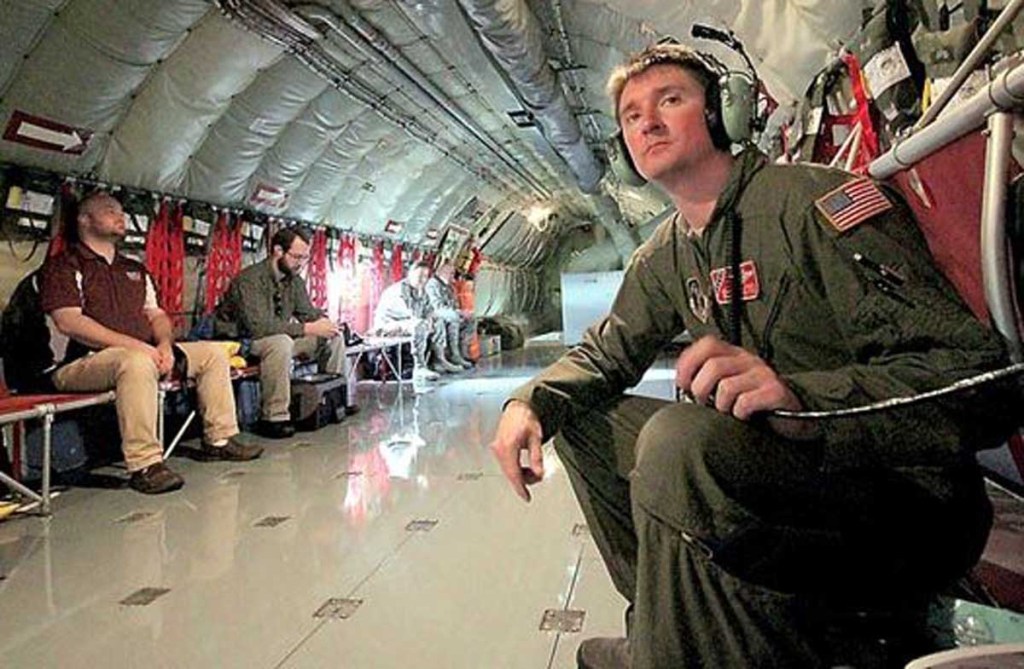186th Refueling Wing participates in wartime training exercise
Published 5:00 am Sunday, November 2, 2014

- Master Sgt. Joel Jones, with the 186th Air Refueling Wing in Meridian, sits aboard a KC-135 Stratotanker with guests from the media during a refueling mission Wednesday.
A country has been invaded.
Armies are moving. Air strikes are being called in. Pilots soar over the Gulf of Mexico. The 186th Refueling Wing out of Key Air Field in Meridian flies south to refuel fighter jets and send them back into combat.
Trending
That was the scene this week during Southern Strike 15, a wartime training exercise in South Mississippi involving 51 different agencies, including the FBI, from 18 different states. There are 23 aircraft, 795 personnel and 16 boats in Gulfport for the exercise.
Every aircraft in the exercise transmits back to a command center in Gulfport. The fighters “shoot” through a computer that registers the shot as a kill or a miss. In real time at the command center, the planes and the information appears on a screen.
“It’s just like you’d see on a video game, said Col. Billy Nabors, Wing Commander with the 186th. “You’d see the little figures that are closing in on each other, and you see them shooting their missiles and you see them peeling off and you see the computer analyzing that these got shot down, so they’re no longer in the fight.”
The pilot who is shot down is removed — temporarily — from the fight, while the victorious pilot engages another combatant.
“Southern Strike is a large scale war game,” said Col. Craig Ziemba with the Combat Readiness Training Center in Gulfport and Camp Shelby. “It’s air to air, air to ground and special ops. It includes the Pearl River, Cat Island, air to ground at Camp Shelby, and the Gulf of Mexico.”
Nabors said the training is less about fighting and more about practicing putting the right people in the right places.
Trending
“it’s basically an opportunity for a lot of different interagency assets to get together and practice war fighting, coordinating events, coordinating actions they have to do,” Nabors said. “Everything from how we might insert special operations teams into a certain area.
“It’s just basically just setting up a possible wartime scenario and commanding and controlling those forces against another set of enemy forces that are being commanded and controlled by a counterpart, just to practice those actions, that’s really all this is.”
The exercise includes intelligence surveillance recon aircraft, Air Force Special Forces from Hurlburt Field in Northwest Florida, SEAL boat teams out of Stennis, and fighter aircraft. “(The fighter aircraft) would practice coming in, for instance, and setting up an air battle to where they would be fighting enemy forces up high while the transport aircraft might be coming in low to drop off troops, to do a ground offensive or something,” Nabors said.
The multi-faceted training operation is performed at a cost of about $100,000, significantly less than the $600,000 in government funds it cost to conduct Red Flag, an Air Force combat training operation conducted annually out of Nellis Air Force Base in southern Nevada.
Some of that cost is spared because of the Combat Readiness Training Center (CRTC) in Gulfport, which has more than 300 rooms and more than 700 beds available for lodging and hangar space. In the past, the CRTC has been used as a training location for specialized exercises and disaster support
“We have our lodging already available that we use,” Nabors said. “It’s available to us for disaster operations were we to move a lot of troops in here — if we had to handle another Katrina or something. It’s there. Why not use it? So we’re using that for free lodging.
“It’s just the cost of actually operating the aircraft when you can come to a centralized location like Mississippi, versus sending everybody in the country off to Alaska or somewhere else in order to run one of these other exercises.”
Nabors said the relative low cost of the training exercise will be something the U.S. Department of Defense will likely take into consideration when they next have Base Realignment and Closure (BRAC) hearings for budget purposes.
“The main reason we were doing it at the CRTC location is because that location has been under the gun for elimination and basically through the BRAC process has been looked at as a possible location to close,” Nabors said. “We want to demonstrate that, ‘No, it shouldn’t be looked at as a location to close, because you’re just not thinking outside the box. You’re not thinking about how this asset down here has this huge capability to house people and to operate out of at very low cost, versus sending everybody up to, say, another Air Force base building or to another office location where they have to pay for rooms or send them downtown on the economy to pay for rooms.'”
“We want them to say ‘Well, that is a viable option to use that location a different way.'”
Nabors said the mission of the 186th, which flies refueling missions every day, remains the same, whether training or in combat.
“Everything that we do, we do on a regular basis all over the world,” Nabors said. “We’ve got aircraft in Guam right now that if anything was to kick off in the Pacific, this is what we’d be doing, we’d be fueling fighters, and we’d be fueling AWAX command and control aircraft and we’d fueling bombers and refueling transport planes. There would all be some purpose to it.
“There would be a plan and a mission and we would be executing our piece of it. When we’re over in the Middle East — right now some of our crew are flying with the active duty because we’re still in training right now. Those guys over there are taking off out of an airbase there. They’re going up and refueling fighter aircraft from foreign countries, from the Navy, from the Air Force. Then those guys are going down and dropping bombs on ISIS and killing them and then coming up, getting gas and going back down and doing it again. Then they go home, and then we go home.”





